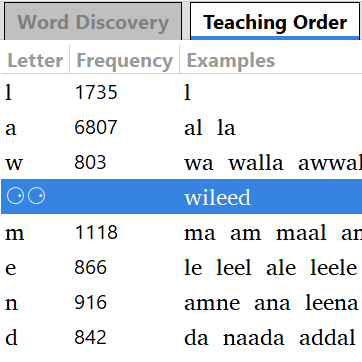Primer Prep
PrimerPrep allows you to load sample text files in a language, and can immediately show the “optimal” teaching order and which words (from your texts) are available for each lesson. You can literally have useful results in under a minute. But there are also numerous options for fine-tuning your results, including identifying word-break characters, digraphs, and affixes, and excluding specific words or affixes from the analysis. You can also easily change the teaching order with drag and drop.
Determining the teaching order of letters for a primer is arguably the main function of PrimerPrep. It uses the elimination algorithm to determine the most productive teaching order, and presents all of the words from your input texts that can be created with just the letters already introduced to that point in the primer. Do you have a special need or requirement for the teaching order? No problem! Just drag and drop a letter in the teaching order to give it a new position. All of the example words are automatically recalculated to reflect the new order. You might want to do this to separate the introduction of similar letters in the primer (e.g. "n" and "m", or "b" and "d"), or to introduce a particularly useful word earlier in the primer. You can also add "sight words" in the teaching order, words that students are taught to recognize by sight, not through decoding. These might be words which can be drawn easily or are useful for story building.
